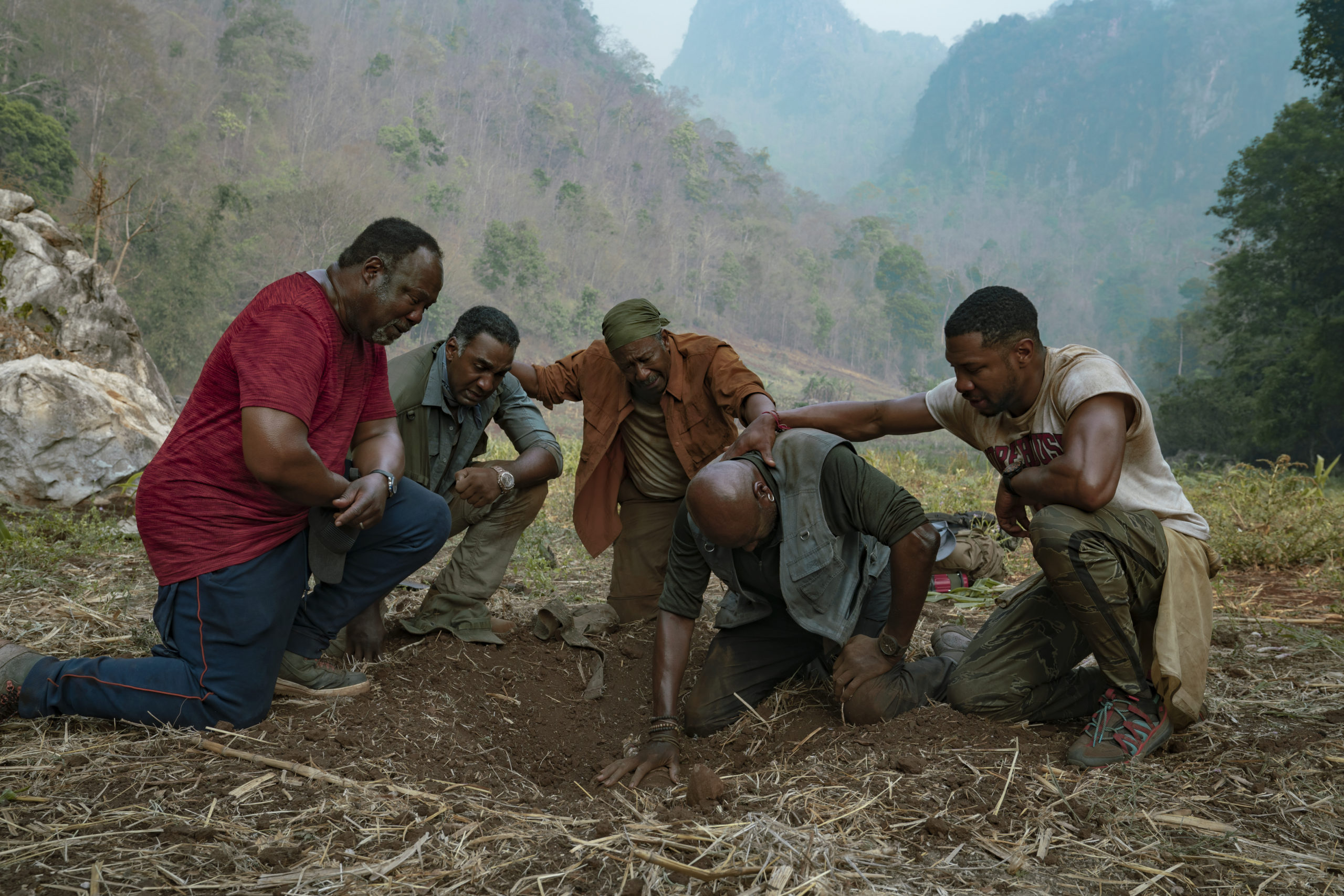The characters in the film are so complex and nuanced. Delroy Lindo’s character really defied convention. Can you talk about working with your cast?
You have to have great actors. You have to cast great people to get great performances. I know it sounds basic and simple, but it is basic and simple. Not only Delroy. Isiah Whitlock, Clarke Peters, Norman Lewis, Jonathan Majors. They were doing work. And not under the best conditions either. We shot this in the jungles of Thailand. There wasn’t a day that was under 100 degrees. We were shooting in the jungle, and it was no joke. Jungles have snakes. We had to have a snake wrangler on set. Snakes in a jungle don’t play. Snakes in a jungle have venom. We had a two-week boot camp in addition to the rehearsal process.
This is fourth time I’ve worked with Delroy Lindo, but it’s been a minute. When I sent him the script, he had trepidations. He couldn’t get around wearing that [MAGA] hat. He said “Spike, I’ll call you back you in a couple days.” Then he asked if we could make the character neo-conservative, and I said we can’t do that. He had to wear the hat. He said, “I’ll have to call you back in a couple days.” And he called me back and he got to a place where he could play that guy with that hat. What he did in that role… he did the damn thing.
This war never goes away.
What was it like collaborating with your Cinematographer Thomas Sigel? You play with formats and aspect ratios and film stock.
Tom and I are about the same age. The Vietnam War was televised in American living rooms. I was ten years-old; Tom was eleven. What we saw on the news was 16mm footage. So we shot with Super 16mm cameras for that footage. Norm Lewis’s character [Eddie] has a Super-8 camera, so the Super-8 stuff you saw was Norm’s stuff. In fact, he gets a credit in the film as a camera operator! Aspect ratios… we were feeling it. There was a lot of stuff we tried in the edit room that didn’t work. I have to shout-out to my editor, Adam Gough. We were exploring. We did not want to put creative handcuffs on ourselves.
I’d love to talk about the soundtrack and particularly the importance of that Marvin Gaye album throughout the film. I understand you got together with the cast to read the lyrics from that entire album?
I think Marvin Gaye’s What’s Going On album is one of the great albums of all time. Marvin Gaye had an older brother named Franklin who did three tours in Vietnam. He was a raid operator so he was writing to Marvin a lot. Writing his firsthand experiences seeing that war is hell. Marvin’s reading that and he’s also seeing the black soldiers come back home to Detroit. That album came out in 1971, right in the middle of the Vietnam War. This is the album people were listening to. I was in high school. It’s always been a very memorable album. I’m old; it came out on vinyl! You had to flip it over. The way Marvin did it with the songs, they segue seamlessly from one to the other.
The actors knew that Marvin Gaye was a character in this movie. He’s the voice, the heart, the soul, the humanity.
Can you talk about the scene where Paul leaves the group and gives that incredible monologue directly to the camera?
That was scripted. It was one of those moments where Delroy was in the zone. The first take he had this big machete and it’s a close-up. Not Steadicam, but handheld. As we’re doing the take, he’s chopping down all these trees. I said to the art department, “Find some more trees.” Every take we had to find more trees. I was hurting because he was on fire, and when actors are going, they want to go right away. But that scene, oh my god. He tore that up. People write to me and say “Spike, I had a father like Paul. My uncle, my father, my cousin… they were in Vietnam.” And the person that went to Vietnam was not the same person that came back. One of the best lines in the film is that this war never goes away. Families are still torn because of this amoral war.

